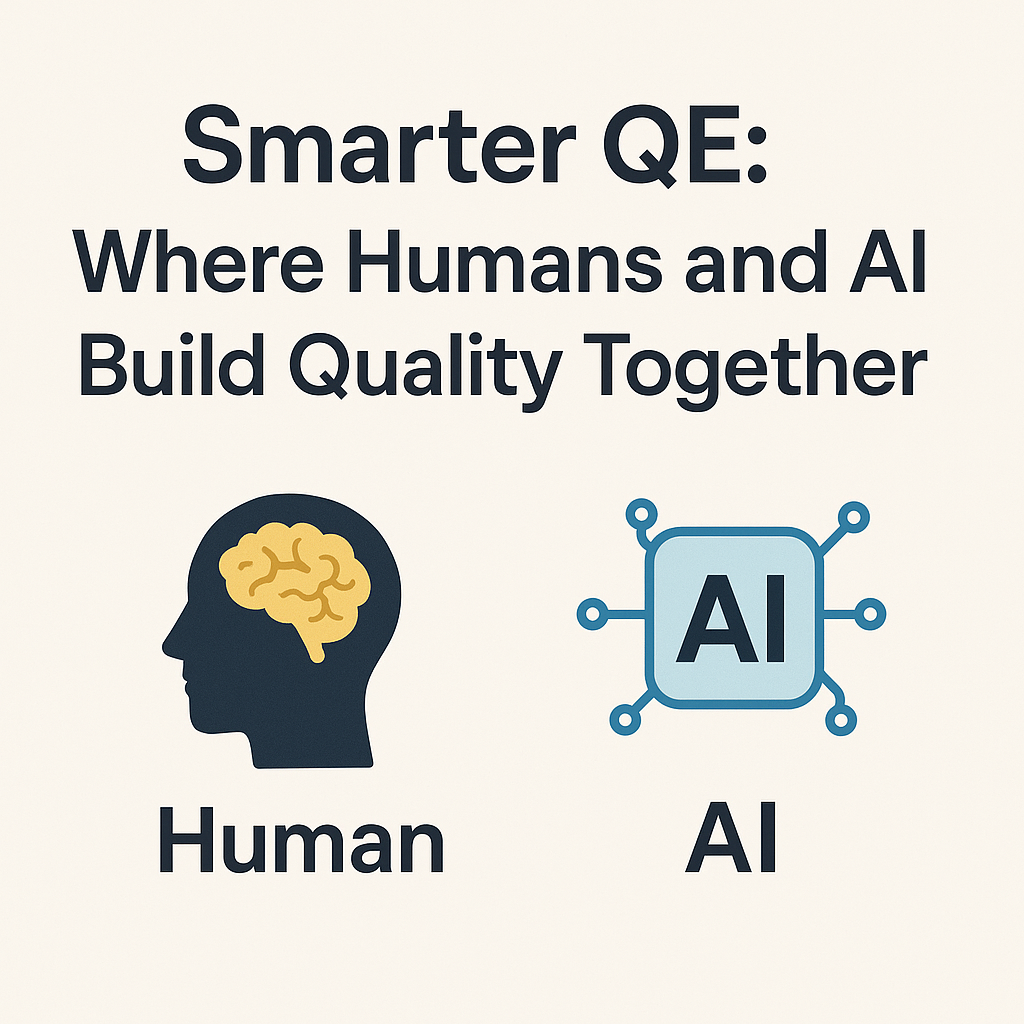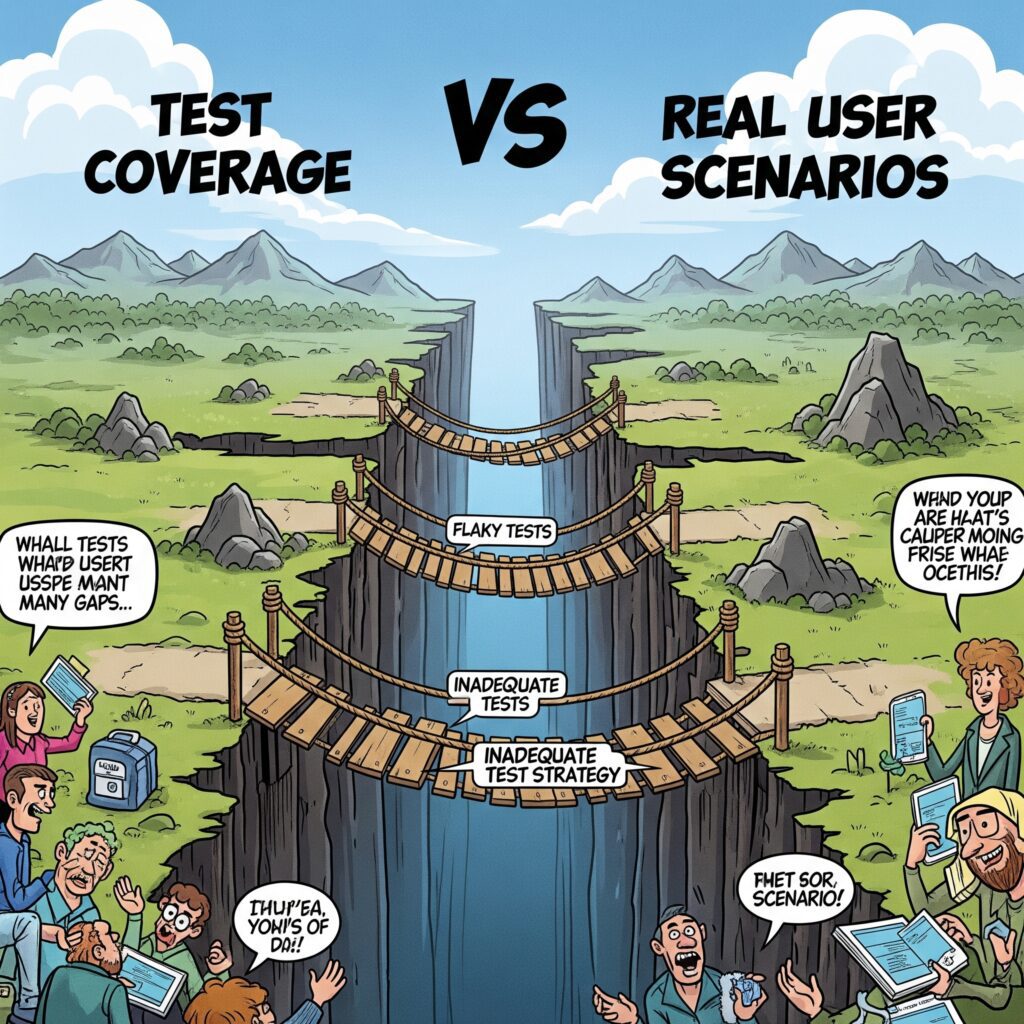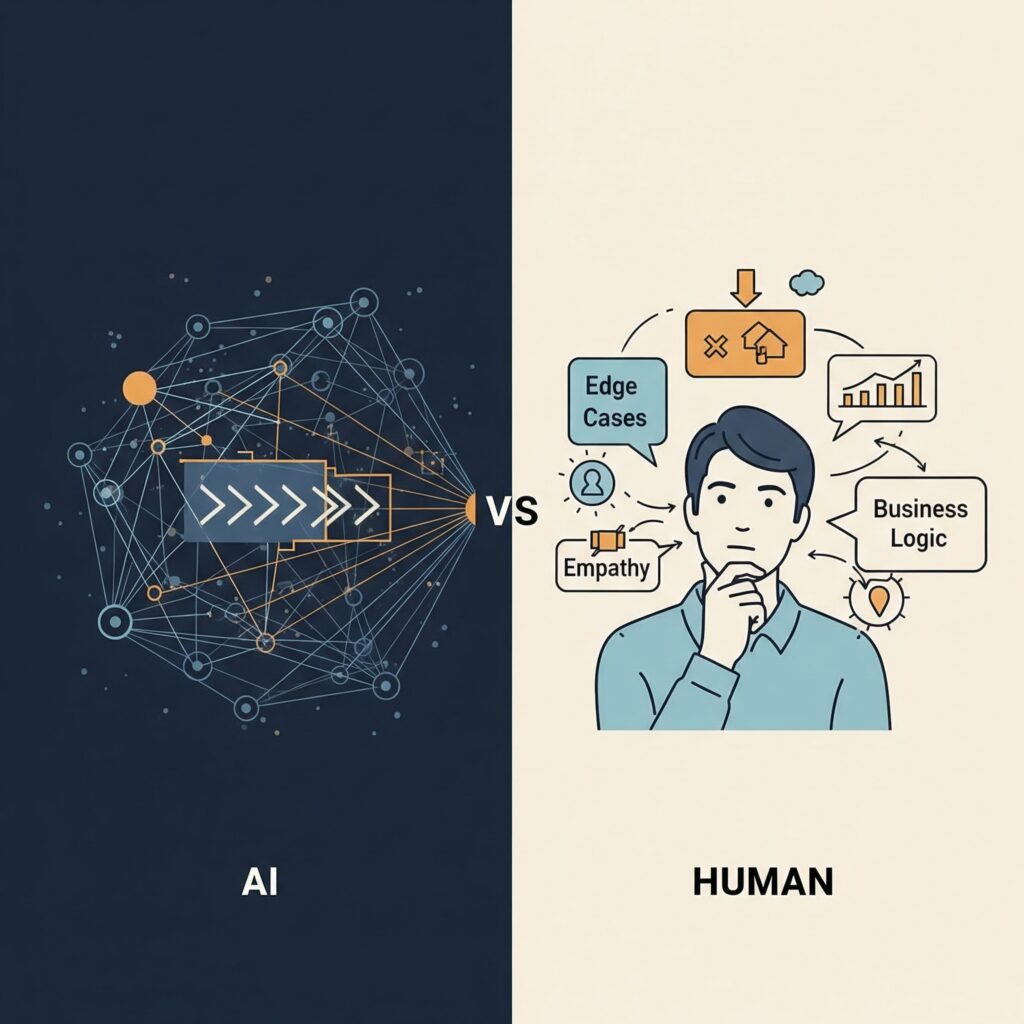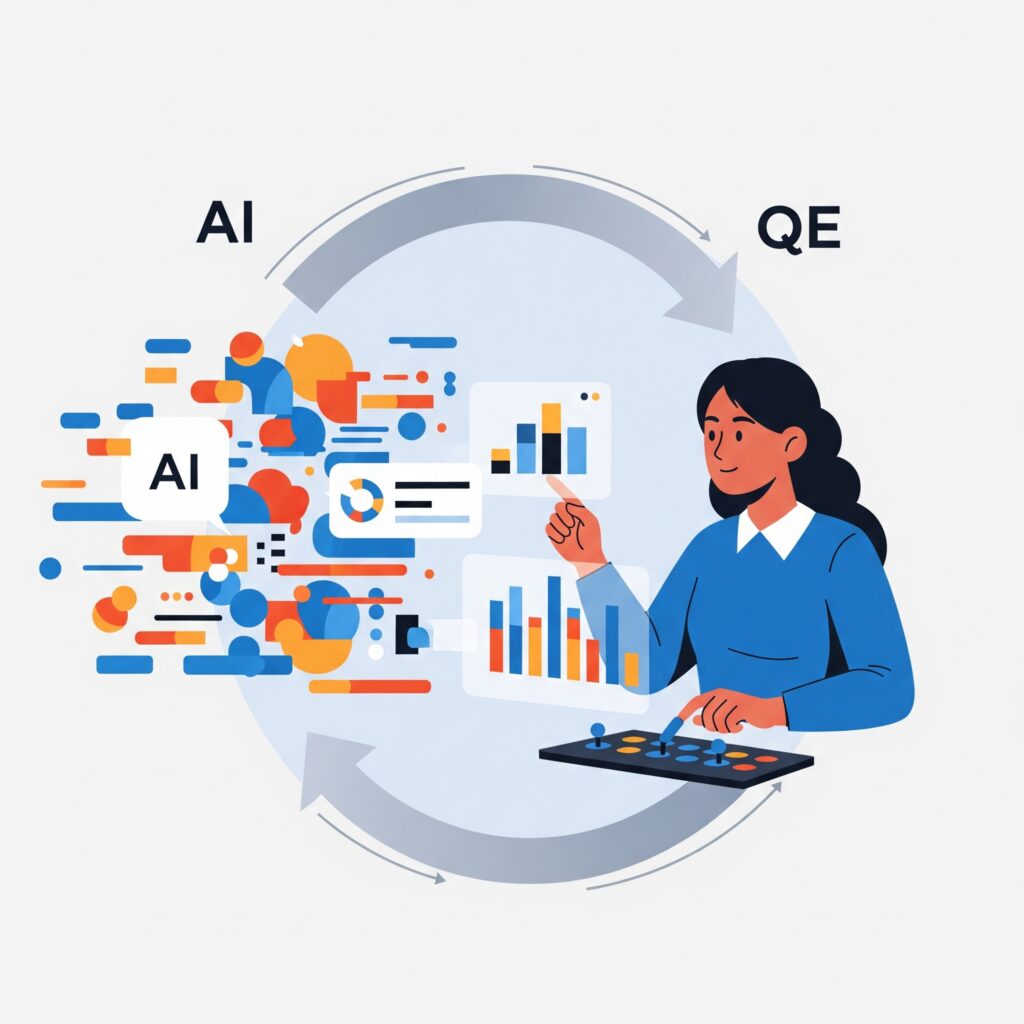|
Getting your Trinity Audio player ready...
|

In the fast-moving world of software delivery, quality is no longer a gate at the end, it’s a mindset woven through every stage of development. With automation and AI taking center stage in Quality Engineering (QE), we’re in the middle of a major shift. But even as we celebrate speed and scale, we must pause and ask: Are we solving the right problems? And more importantly are we still thinking like humans?
Where We Are Now
The modern QE landscape is built on three pillars:
- Test Automation: Selenium, Cypress, Playwright, and mobile test frameworks like Appium are now table stakes. Continuous Integration pipelines ensure tests run early and often, reducing feedback loops.
- AI in QA: Tools like Testim, Mabl, and even custom ML models are helping identify flaky tests, generate scripts from user flows, and predict risky modules based on historical data.
- Shift-Left and Shift-Right Testing: Teams are embedding quality early through unit test enforcement and TDD/BDD practices, while also monitoring post-release behavior using observability tools.

It sounds perfect and yet, we’re still shipping bugs. Why?
What Needs Improvement
Despite all the tooling, teams face common issues:
- Flaky Automation: Tests that pass locally but fail in CI environments continue to erode trust.
- Coverage Gaps: Automation scripts often miss edge cases, complex business logic, or UX nuances.
- Tool Overload, Insight Scarcity: Many dashboards, little clarity. Metrics exist but are they actionable?
- Over-Reliance on AI: AI helps scale, but it lacks the ability to question the context or understand user emotion. It still needs direction.
Where Human-QE Still Matters (More Than Ever)
Technology doesn’t replace thinking it enhances it. And this is where the human Quality Engineer shines:

- Contextual Understanding: A seasoned QE can question a seemingly correct user story and catch business misalignments that no AI tool can.
- Risk Prioritization: Automation covers breadth; humans provide depth. A good QE asks, “What’s the cost of this failing in production?”
- Test Design and Strategy: You can automate a thousand test cases — but a human knows which 10 really matter.
- Collaboration and Coaching: QEs work across devs, product owners, and users to drive a culture of quality. No bot can replace that advocacy.
How to Build the Future Together
If we want to truly evolve QE, here’s where we need to invest:
- Smarter Automation: Shift from script-based automation to model-based and intent-driven automation.
- Explainable AI: Push vendors and teams to adopt AI that provides why it made a decision not just the outcome.

- Quality Intelligence Platforms: Connect TestLink, Jira, Jenkins, and production logs not just for data collection, but for real-time insights.
- Upskilling QEs: Train QEs not just in automation scripting but in AI, observability, and product thinking.
- Human-in-the-Loop Design: Ensure AI suggestions are reviewed by humans who understand context and consequences.

Conclusion: Be the Brain Behind the Bots
We’re in an era where automation and AI will do more of the execution. But they still need the direction and that’s where the human QE becomes more strategic than ever. Our role is evolving: from testers to quality architects, risk managers, and AI trainers.
Quality is not a task. It’s a lens and humans still wear it best.
Happy Testing
To learn more about Quality Engineering topics visit – https://engineering.rently.com/quality-engineering/
Get to know about Rently at https://use.rently.com/
Visionary IT Professional with more than a decade of experience in Quality engineering with expertise in Automation , CI/CD , Security and Performance .

